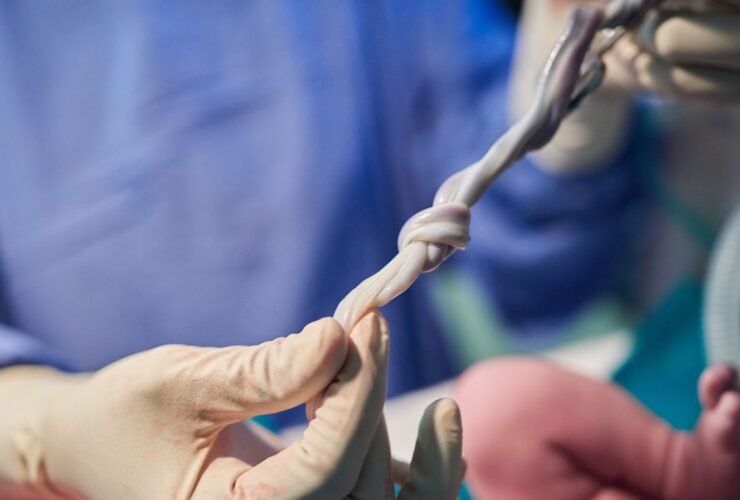You may have heard of a caesarean section (or c-section) before. Your mother may have had one, or maybe you or your partner expect to have one. But there is a lot that most people don’t know about this surgery, and a lot that might inform you in the future. Read on for Dr Skinner’s 10 interesting things about caesarean sections.
- Caesarean section is one of the last major incision surgeries still performed today. Most other surgery is performed through a small hole or small incision. In many cultures a caesarean is considered to be dangerous, but in Australia the risk has been drastically reduced due to new technology, improved surgical techniques and medicines.
- At the beginning of a caesarean section, six separate layers of the abdominal wall and uterus are opened individually. Once the baby is delivered the uterus is closed with a double layer of stitching. Four of the five remaining layers are stitched with a single layer of stitching, but one layer is not restitched as it heals better – with no buckling and reduced chance of scar tissue developing, without restitiching.
- No muscles in the abdominal wall are actually cut. In fact the Obstetrician goes between the muscles.
- Some people are concerned about the pain relief during a caesarean. Less than 1% of caesarean sections are performed under a general anaesthetic in a private hospital. A general anaesthetic is only performed when the woman can’t have a spinal/epidural or if the spinal/epidural isn’t working or cannot be successfully inserted.
- One question we get asked quite a lot is, “Can I have a normal delivery following a caesarean section?” The answer is that a reasonable number of women can have a normal delivery after having one caesarean section if they desire it, provided the same problem that cased the initial caesarean does not occur again.
- Some women choose to have an elective caesarean section, and many women feel concerned about making this decision – but this should not be the case. Many women require or request a caesarean due to not only obvious maternal or baby health reasons but also psychological issues. Some women have mental health concerns that also need to be taken into account. It is important that these issues are managed just as carefully as the physical issues.
- Caesarean section is a major surgery and therefore, post-surgery, women require significant tablet analgesia for up to 2-3 weeks. This is very normal and necessary.
- There are eleven people in the surgical theatre room during a caesarean section. Firstly there are the parents, your obstetrician, an assistant surgeon (also an obstetrician), anaesthetist, anaesthetic nurse, paediatrician, midwife, scrub nurse, scout nurse (assists the scrub nurse) and an operating technician (who manages all of the electrical operating equipment). It is a busy place!
- Forceps are sometimes associated with the delivery of a baby in a vaginal birth. However, sometimes the obstetrician will need to use forceps to help deliver the baby’s head during a caesarean section. This is because the incision is barely wide enough to ease the head out, so forceps are needed to safely assist this process.
- The spinal/epidural takes approx. 3 hours to wear off. This is replaced with tablet analgesia. It is important to remember to maintain your analgesia as prescribed and not try to wean yourself off it early. Spinal anaesthetic risk of a permanent partial paralysis is 1:10,000. This risk is low compared even to the yearly risk of being the driver of a car on the road.
For any questions regarding a caesarean section, contact your obstetrician.


